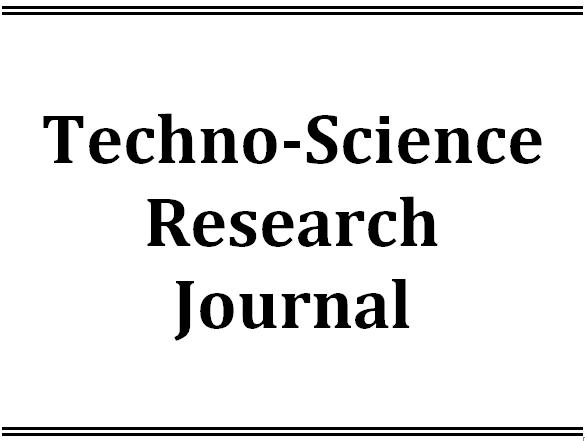Latest Issue
Empowering Education with Online Khmer Handwritten Text Recognition for Teaching and Learning Assistance
Published: August 30,2025Undergraduate Student Dropout Prediction with Class Balancing Techniques
Published: August 30,2025Status of Seawater Quality at Koh Rong Island, Sihanoukville, Cambodia
Published: August 30,2025Low-Complexity Detection of Primary Synchronization Signal for 5G New Radio Terrestrial Cellular System
Published: August 30,2025Word Spotting on Khmer Printed Documents
Published: August 30,2025Tuning Hyperparameters Learning Rate and Gamma in Gym Environment Inverted Pendulum
Published: August 30,2025Examining Passenger Loyalty in Phnom Penh Public Bus System: A Structural Equation Modelling Approach
Published: August 30,2025Prediction on Load model for future load profile of Electric Vehicle charging demand in Phnom Penh
Published: August 30,2025Economic Study on Integrating PV-DG with Grid-Tie: Case Study in Cambodia
Published: August 30,2025Attitude Estimation by using Unscented Kalman Filter with Constraint State
-
1. Department of Industrial and Mechanical Engineering, Dynamics and Control Laboratory, Institute of Technology of Cambodia, Russian Federation Blvd., P.O. Box 86, Phnom Penh, Cambodia.
Academic Editor:
Received: September 15,2022 / Revised: / Accepted: December 30,2022 / Available online: December 31,2023
Quadcopters or quadrotors have always desired to fly smoothly and stay on their path in order to enhance their application. This better performance can be achieved depending on the accuracy of the data. However, relying purely on sensor data cannot be accepted due to the inaccuracy of measurement, thus state estimation to filter noise out is important. This paper is focused on performance evaluation on quadrotors attitude estimation using Unscented Kalman filter (UKF) by comparison with quadrotors attitude computed from the mathematical model. The UKF is an algorithm dealing with noise filters that can be used for state estimation such as attitude and bias of sensors. UKF is divided into two steps which are Measurement Update, and Time Update. However, the algorithm is initialized by determining initially on the mean and the covariance. Then, the measurement update algorithm uses the accelerometer sensor data and magnetometer sensor data pose the next time update. Gaussian with covariance (Q and R) of the UKF algorithm are determined in this paper. Quaternion is used to describe state equations which are based on the kinematic model. The input of the state equation is taken from sensors of the Pixhawk 4 controller which are gyrometers (data of angular velocity). In addition, the output equation is based on accelerometer modeling and magnetometer modeling including data from accelerometer sensors and magnetometer in the Pixhawk 4 controller. MATLAB & Simulink have been used for this experiment and Pixhawk Controller hardware is used as the flight controller. The result of attitude estimation expressed about component of quaternions and bias of sensor from Pixhawk 4. The graph is shown the performance of attitude quadrotors and bias of sensor.

